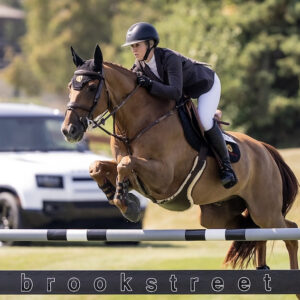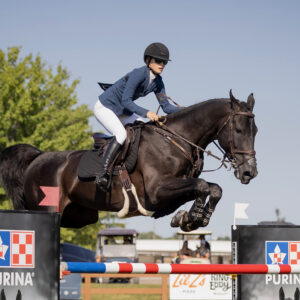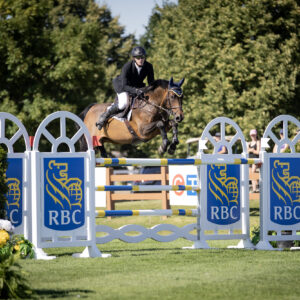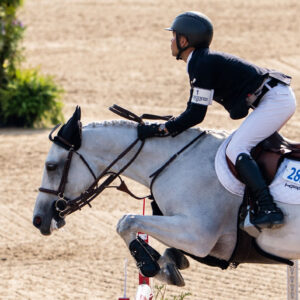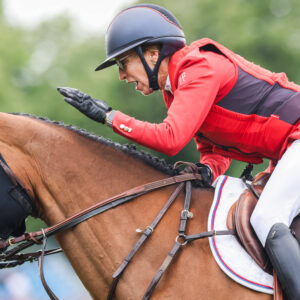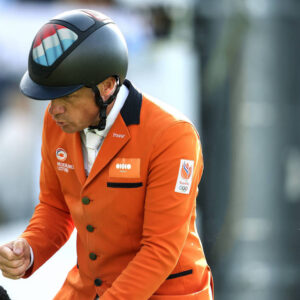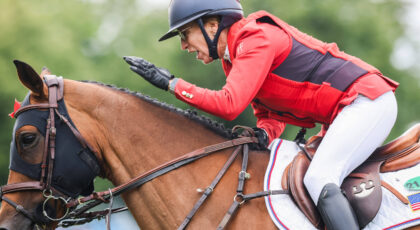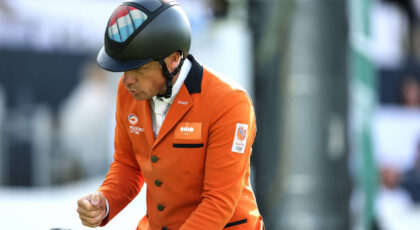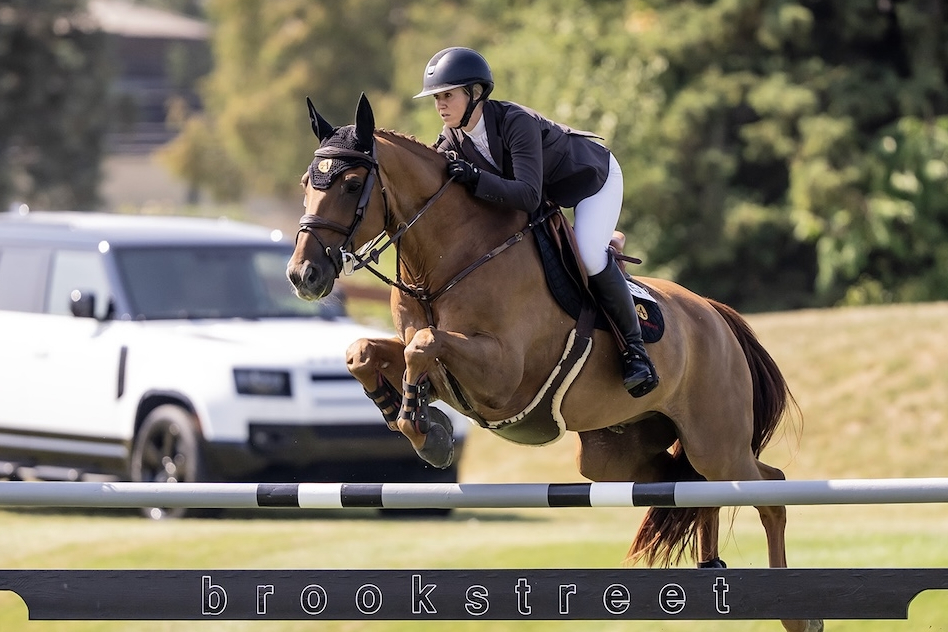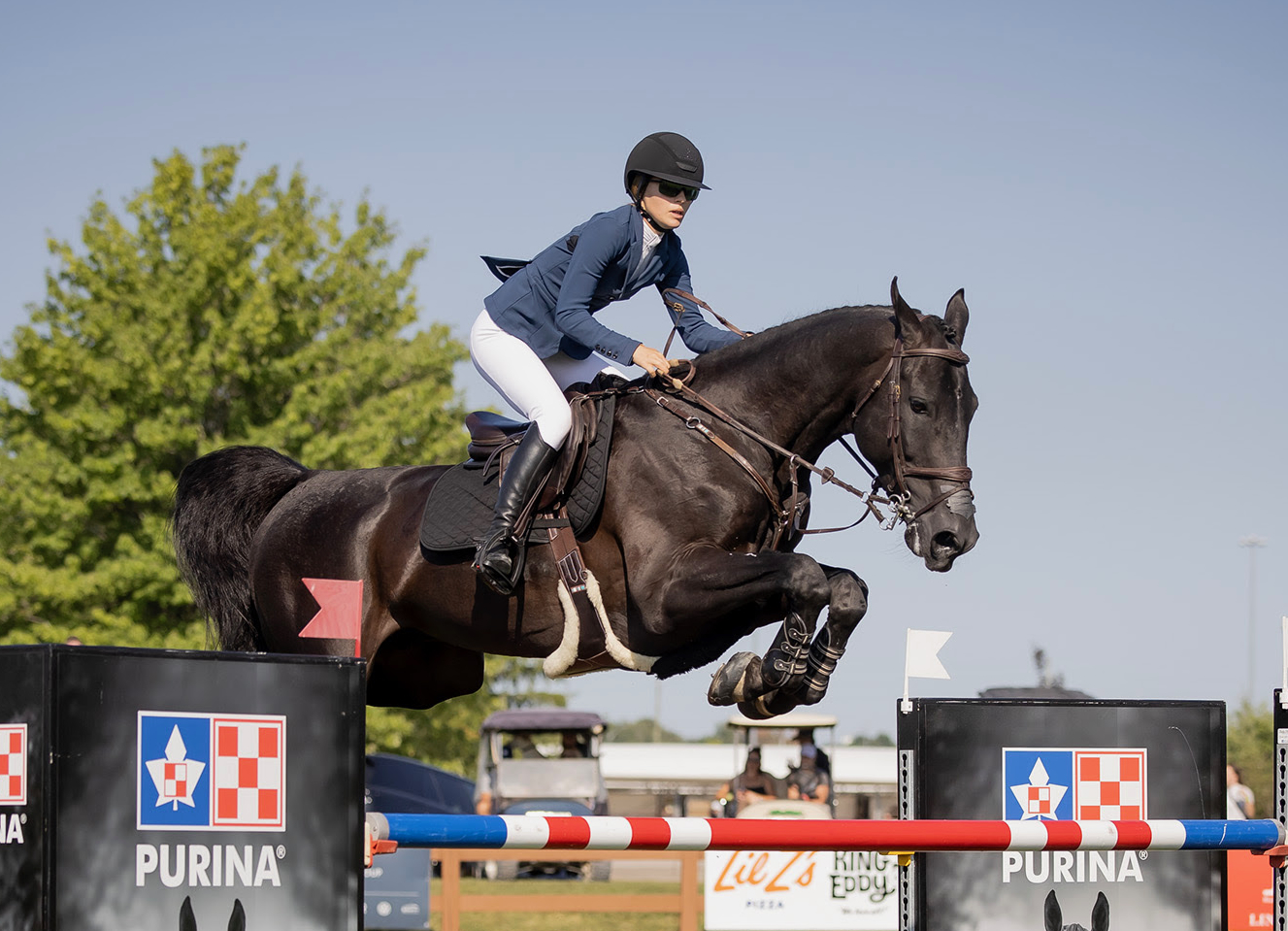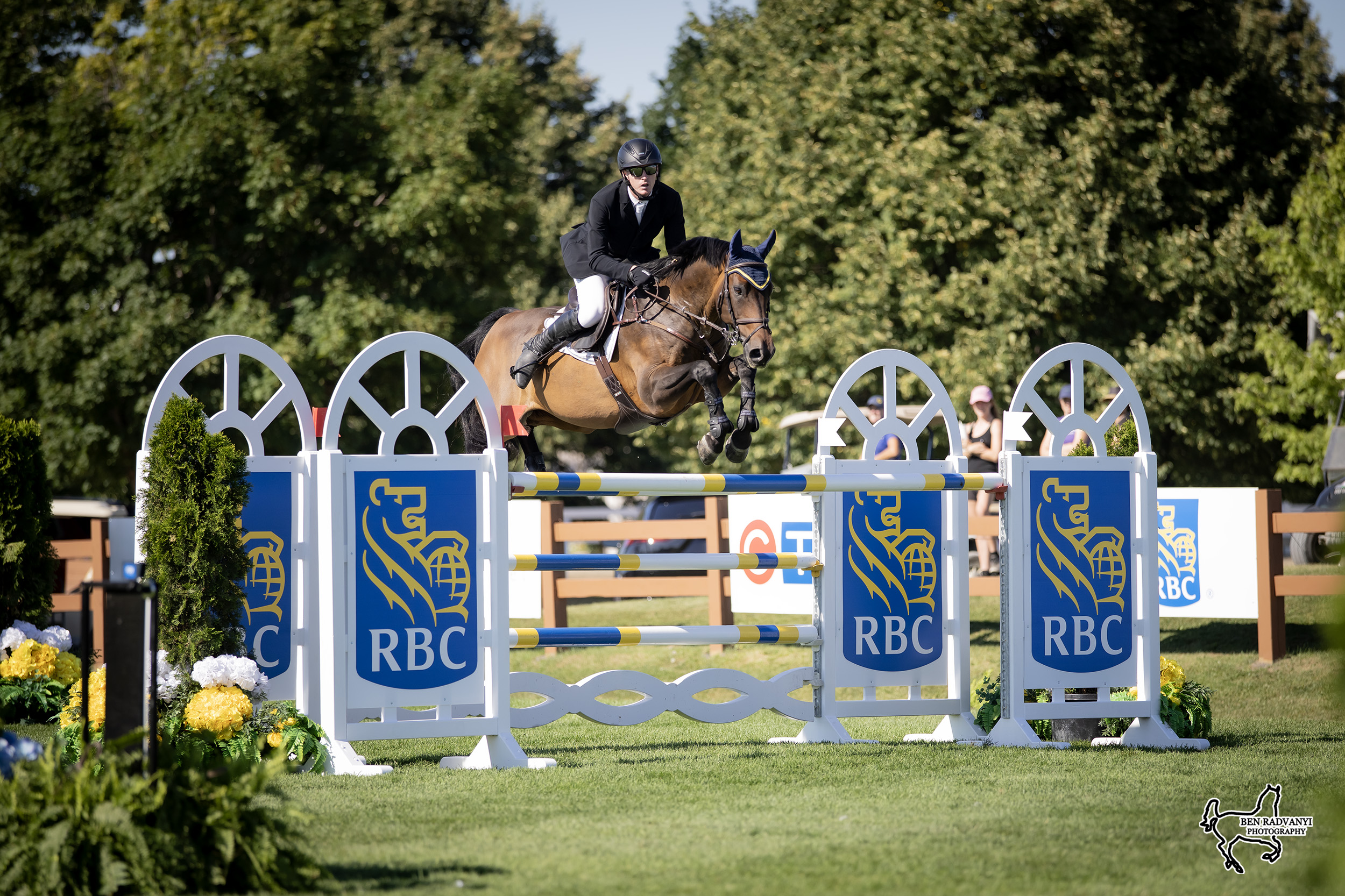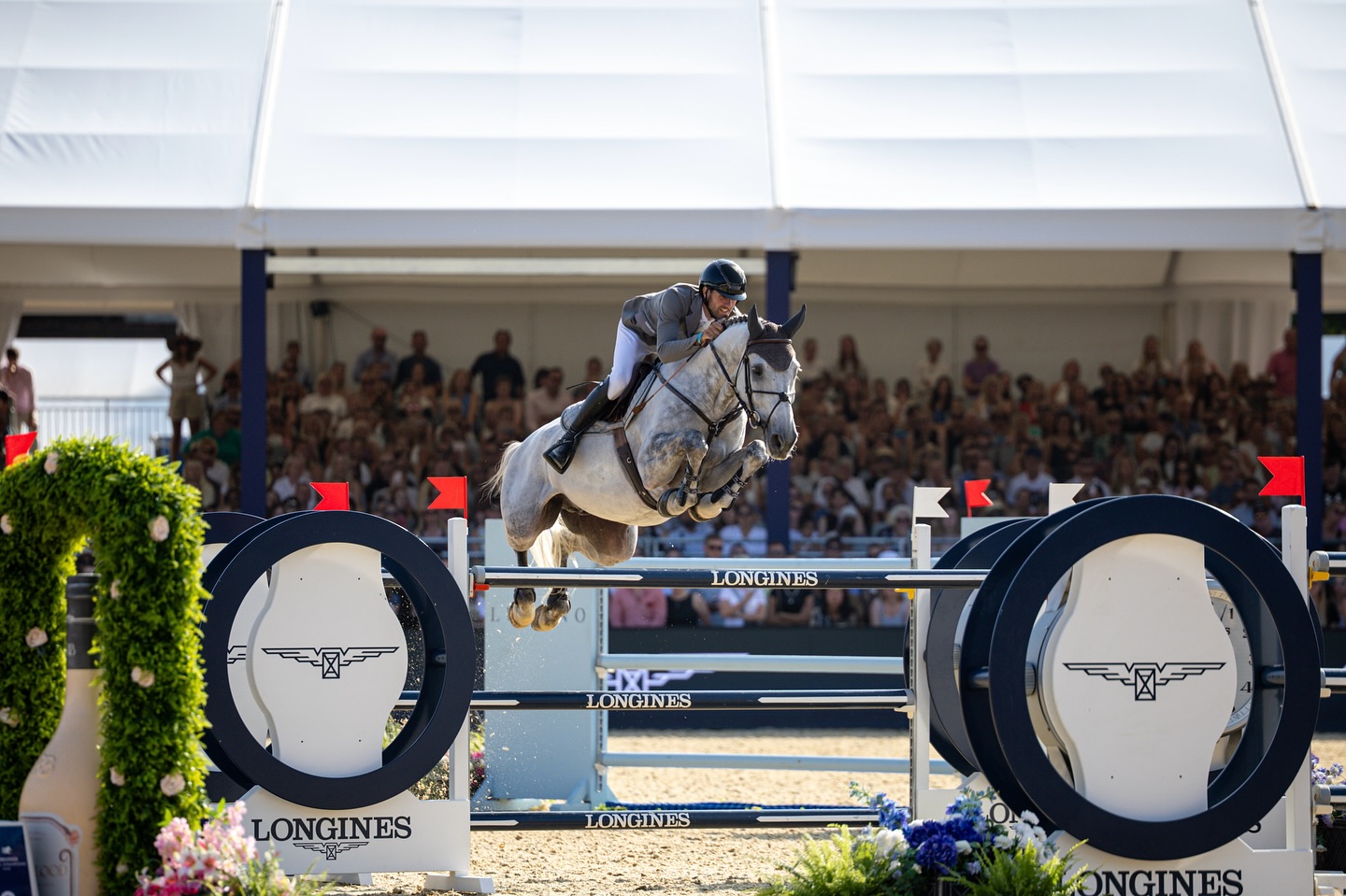If there was an encapsulating moment during the individual final at the 2025 Longines FEI Jumping European Championships in A Coruña, Spain, this might be it.
Gilles Thomas and Ermitage Kalone, heading for home in the last round of the individual championship, less than a full second separating their score, and the bronze medal, from the next-highest competitor, Ben Maher (GBR).
But as they approached the final line—a difficult, 1.60m triple combination on account of the water tray under element B, and a wide, final oxer at C—there was no sign of the nerves, let alone stress, that might have rattled a lesser a pair.
“[He] relaxes through the combination,” commentator Phil Ghazala described offhandly, eliciting a chuckle from fellow commentator Jessica Kürten.
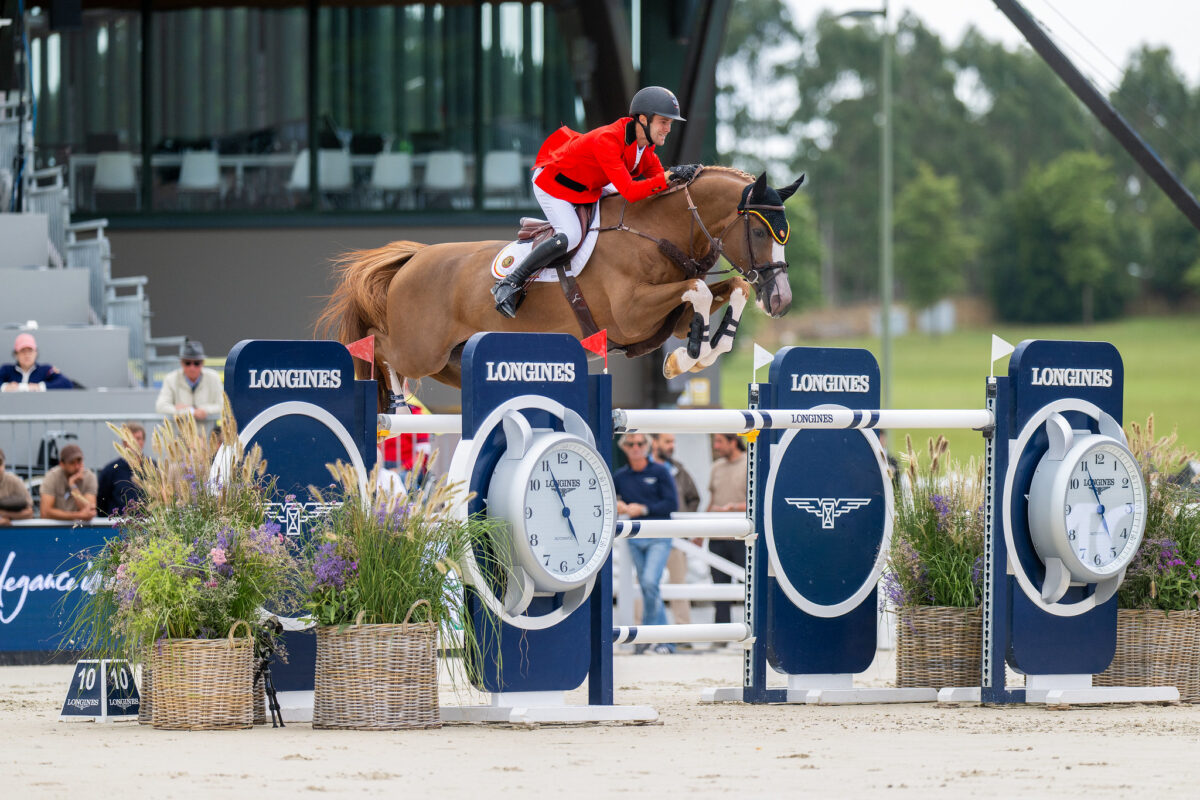
Relax? Into a combination like that? After five rounds of jumping over three days, with zero margin for error?
But there was no question as Thomas, 27, and Ermitage made good over the last two jumps on course that Phil Ghazala was right.
They were calm, focused; the stallion loose in his body, still jumping with a foot of clearance over most every fence. The same combination had already anchored the gold medal-winning Belgian squad on Friday, and now, seconds away from adding an individual bronze medal to their resume, they seemed nothing if not relaxed.
What else could you call it?
It was a familiar story for Individual Champion Richard Vogel of Germany, just one year Thomas’s senior, who guided the once-in-a-generation stallion, United Touch S, to the top of the individual podium with similar ease. Of the 89 riders whittled down to a mere dozen in the final individual competition, Vogel and United Touch didn’t drop a rail all week, winning on their record-setting penalty score of 0.01—which is less a score than it is an infinitesimal improbability.
“[It’s] brilliant how these young riders are able to produce what they need to produce at the right moment. It all looks so easy, but there’s so much behind these performances—and alone, for these riders, to just stay calm, and just do their job, and not think about what they might have to win,” Kürten reflected on air.
Excepting North America, the Europeans are a broad showcase for the sport’s top talent—human and equine, alike—taking place every other year, as opposed to annually, or every four years like the Olympic Games. In this way, the championship can be a strong barometer for rising trends in the sport.
And if this year’s individual final was any indication, the kids are definitely alright.
A full 60% of the top 10 individual finishers were 30 years of age or younger. These included gold medalist Vogel, bronze medalist Thomas, 22-year-old Seamus Hughes Kennedy of Ireland with ESI Rocky (5th), 27-year-old Sophie Hinners of Germany with Iron Dames My Prins (6th), 30-year-old Kim Emmen of the Netherlands with Imagine N.O.P. (8th), and 24-year-old Thibeau Spits of Belgium with Impress-K Van’T Kattenheye Z (9th).
What’s more, both Hughes Kennedy and Spits were making their senior championship debuts, and both on relatively green, 10-year-old horses.

“This has been the Championship of the youth, and the Chefs d’Equipe who have dared to let the youth come on their teams,” Kürten surmised. She isn’t wrong.
In a sport that almost always wins the superlative for having the “oldest Olympians” at any given Games, the 2025 European Championships indicated a potential, major change in show jumping. While the window for peak performance still stretches well into an athlete’s 40s or beyond, there’s now ample evidence to suggest that the age for entering that window may be far younger than we previously thought.
Even more impressive? This European Championship was the most competitive in recent memory according to the numbers. In 2021, there were four riders within one fence of one another going into the last day of competition. In 2023, there were five. In 2025, there were a full 13 combinations still within a single fence of one another.
The difference, according to Kürten, is the multitude of avenues currently available to young riders to build essential show jumping skills from a young age, both in and out of the saddle.
“The youth of today, especially on the Belgian team, there’s so much availability to them. They have availability for mental training. They have availability for press training; they have management. There’s various academies—the Young Rider’s Academy, and [academies in Italy],” Kürten explained.
“There’s so much possibility there for the young people; they have to take it, that’s for sure. But it’s incredible how professional the sport has become.”
Professional in the sense that many of these young riders have not only demonstrated their ability to remain icy-cool under the intense pressure of a major championship, but also to be entrusted to produce or campaign the kind horse power that many of their predecessors (see: Nick Skelton and Big Star) spent a lifetime waiting to acquire.
So, is this a kind of changing of the guard in the sport? Though it’s still early days in that regard, it’s practically Christmas morning for European Chefs d’Équipe everywhere, who woke up on Monday realizing that their selection bench for upcoming championships such as the 2026 FEI World Championships in Aachen and the 2028 Los Angeles Olympic Games are far deeper than they previously considered.
In that sense, the future of show jumping is looking very bright, indeed.
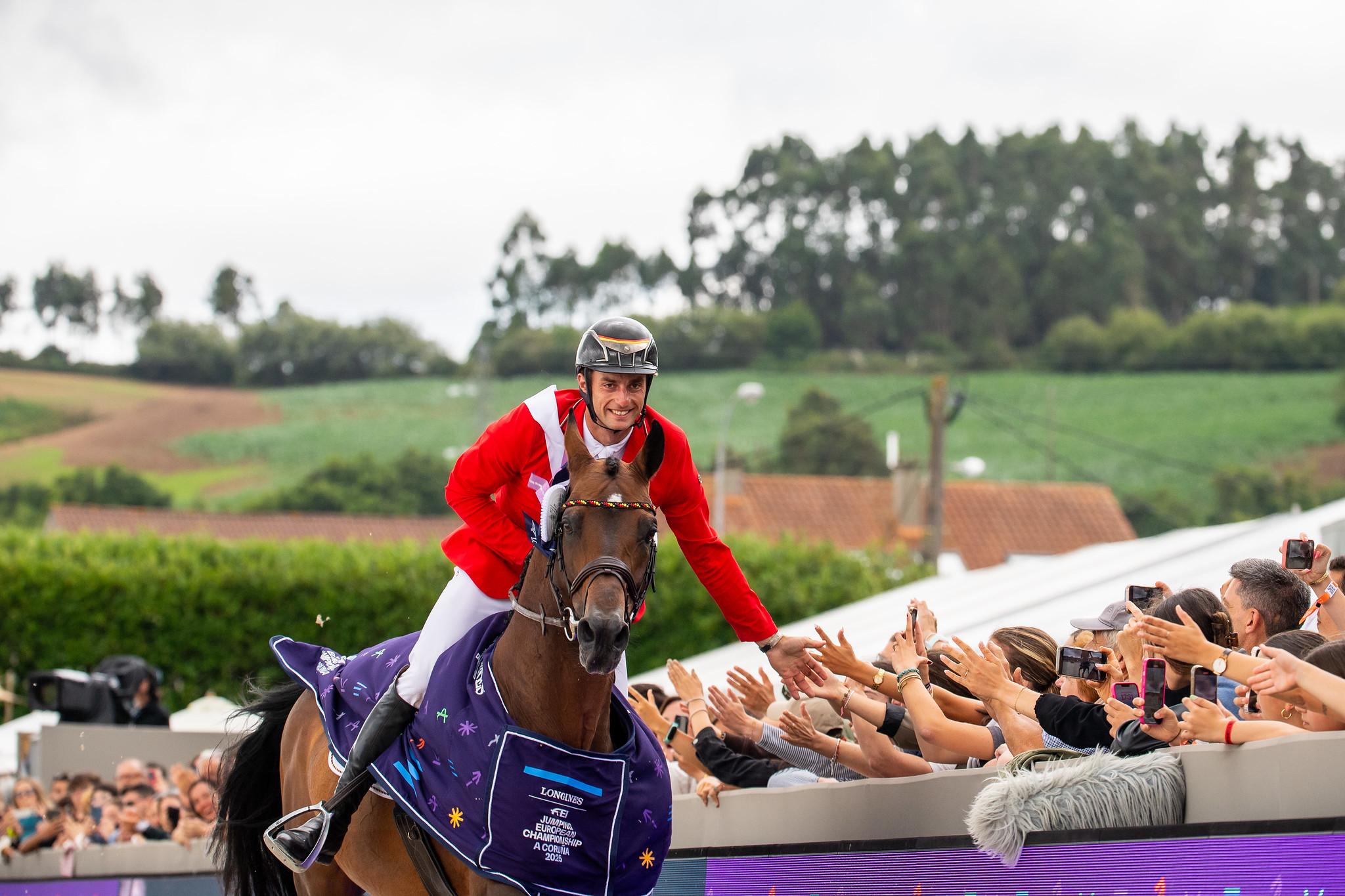

 July 21, 2025
July 21, 2025 






